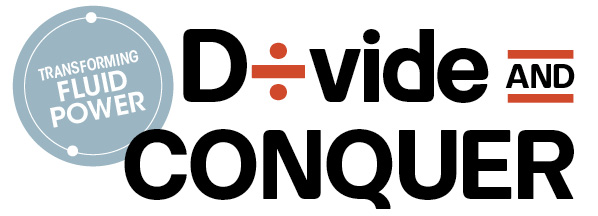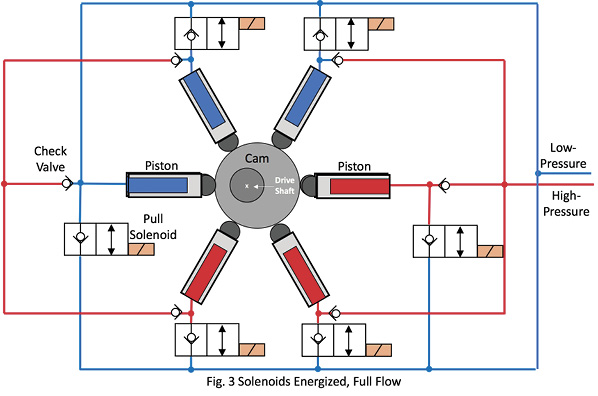A Failed Experiment
Now, don’t get discouraged. When we push the envelope trying to change the paradigm of thinking in the transfer of energy in fluid power systems, we will sometimes have to go against conventional wisdom and will certainly have to do things for which there is no precedent. Whether we succeed or fail, we will be in the spotlight. When we succeed, folks will take notes to see how they can implement changes in their own spheres of influence. We establish a precedent on which others can build and improve. When we fail, folks will take mental notes about how to not get into the same kind of trouble, and we may erect barriers to those who follow. Probably the one barrier that is worse than the “we’ve never done that before” resistance is the “we tried that once but it didn’t work” objection.
I find myself having just created the “we tried that once but it didn’t work” objection.
Now, I’m a little sensitive here. I admit it. I have written about ways to save and recapture energy, not just to tweak your brains but also to actually make a difference in the way we apply fluid power. I want you to know that I am also on the front lines trying to apply these ideas to benefit our industry and the community in which I work. I would like to have only success stories to report, both for my own ego and for your encouragement, but that is an unrealistic expectation.
I am reminded of a quote from Thomas Edison: “I have not failed. I’ve just found 10,000 ways that won’t work.” I am certain that there were times during the 10,000 that he felt the sting of having failed but he pressed on, and we are grateful.
So, in my case, what is the “it” that didn’t work?
Well, the “it” that failed was not actually the circuit or the concept. It was the choice of the components and a failure to get all the information. Let me explain.
I put together a modification to a hydraulic system intended to save energy where, twice an hour, we lift and lower a heavy load and also use a very large volume of fluid at a relatively low pressure. These functions are very important, and so it is necessary to have enough energy stored to accomplish these movements if we were to have a power disruption. The original designers had wisely put in a large bank of accumulators to do this, and it had worked well for a number of years. I had reason to review the system and became convinced that we could make better use of the energy being used. I was still “the new guy,” but a couple of small successes had given me some credibility and I was allowed the opportunity to make some changes in the system. Besides, there was a substantial amount of funding available from the power company for energy-saving projects. If I was successful, the project would be almost completely funded and we would be saving energy for years to come.
There were three things that I chose to do to reduce our energy consumption, two of which made use of common gear flow dividers. The third was to make better use of the electric motors being operated. We were using five electric motors and each was oversized for the pump it was driving. By increasing the pump volume to match the power available and by implementing the flow dividers, we should be able to run the entire system with just one motor/pump combination.
The first use of the gear flow divider/combiners is discussed in an earlier article entitled “Flow Control: If in Doubt, Think About…Energy,” where I describe in some detail the process of using a simple gear flow divider/combiner to recover energy when lowering a heavy load. I won’t repeat it all here, but basically it entails pushing a portion of the returning fluid into an accumulator to be used the next time the load is lifted. The process recovers about 75% of the energy used to lift the load. This is one of the systems I put into place.
The second use of the gear flow divider/combiner is not described anywhere else that I know of. It exists out here in the Land of No Precedent. I refer to it as a flow augmenter. In brief, it simply entails using the combining function with one side of the device being used as a motor and the other side as a pump. Combining the flow out of the motor side and the flow out of the pump side provides an increased flow at a decreased pressure. With an equal displacement gear set, you get twice the flow at half the pressure. If you will, it is nothing more than a hydraulic turbo charger. I saw this as a perfect way to make better use of the stored energy in the accumulators. We were storing the energy at 2000 psi but only requiring 600 psi for the work. That meant a 1400-psi pressure drop that was a waste of energy. By augmenting the accumulator flow, the system required less accumulator volume and reduced the pressure drop by 1000 psi.
It all sounded really, really good. I promoted it. The power company loved it. The folks at the mill were a little bewildered but accepted it. The primary supplier embraced it. What could go wrong?
Details!
A gear flow divider is not a zero leak device. The two sections are connected internally by a shaft that passes through a sleeve. There is no seal and so there is a flow path, although very small, from one side to another. In addition, there is a necessary clearance between the gear teeth and the housing that prevents the gear device from holding pressure. Generally this is not a significant issue, but in this case it was a real problem. We needed to store fluid in the accumulators for an emergency, but the internal leakage of the device provided a constant bleed down of the stored energy because the side used as a pump led directly to the reservoir. No problem! We just added a check valve in the suction line to prevent the bleed off. It worked perfectly…for two days. That is when I heard over the two-way radio that the hydraulic room was awash in hydraulic fluid and the reservoir (1800 gallons) was empty. No one had communicated to the manufacturer of the custom-made check valve that the downstream pressure was to be 2000 psi. They made a valve rated at 500 psi.
The only things that were damaged were an O ring and my credibility. The cost and lead time for a proper check valve were unacceptable. The system was working perfectly well before I decided to improve it.
The energy recovery system was a different story. This is where communication was an issue. The system naturally depended on the weight of the load to drive the fluid into storage. Something that everybody knew and so nobody needed to mention was that the cylinder is not attached to the load but fits into a pocket for lifting. When lowering, the cylinder continues to retract under no load after the weight is resting on its base. The recovery system would not allow the cylinder to retract once the weight was removed. I quickly became part of the “everybody that knew.” This was relatively easy to fix, but it added another layer of complication to a process that was already being questioned. I placed a sequence valve in the system that would shift the recovery device out of the circuit when there was no load. It worked great for about one second. The load is cantilevered out so that as it lowers it has a bit of a bounce. The bounce caused a change in pressure that the sequence valve interpreted as the weight being removed and so it shifted only to sense the load again and shift back causing another bounce causing…well, you get the picture. The slamming and banging made it sound like the entire plumbing system was about to fall apart. It was scary!
I started to say, “I can fix this…” but one look at the foreman told me it wasn’t going to happen. Enough was enough. The perceived perplexity of the system was not deemed to be worth the energy savings when it is only used twice an hour.
The good news? The concepts were proven to be correct. I learned some valuable lessons. We are operating using fewer electric motors, and there is some energy savings to be enjoyed. I may never get the chance to try it again because of the “we tried that once but it didn’t work” syndrome, but you might be able to build on my experience.
Think about it.



